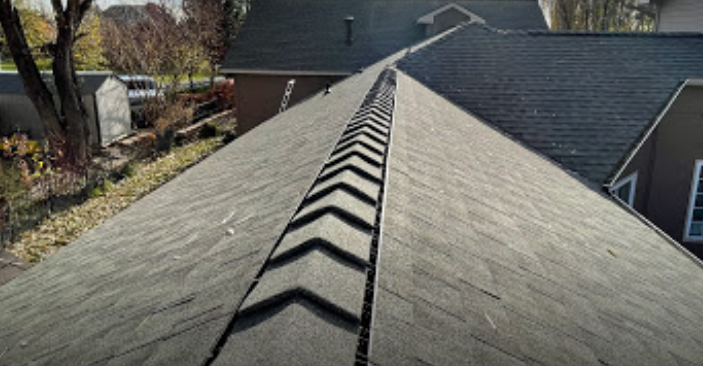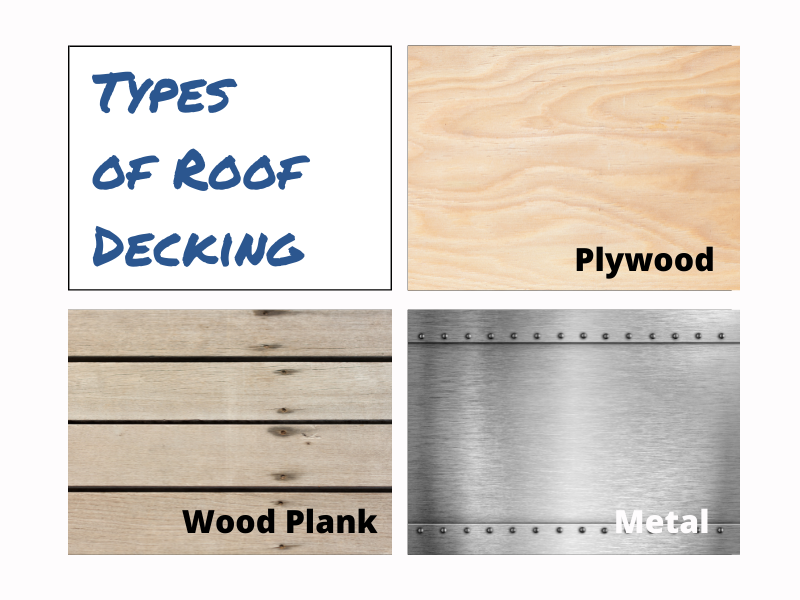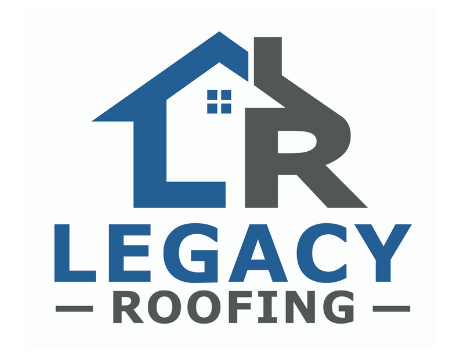Do you need to become a roofing pro to get a new roof? Absolutely not.
However, you do want to be aware of all the possible terms and roofing terminology you might hear when you are given a proposal for your new roof. Terms for roof parts such as the ridge, flashing, rake, gable, hips, and so on – they matter because all of the different roof parts can add to your potential costs!
For example, a new hip roof requires more shingles than a standard A-frame Gable roof. This is why today we will review each of the roofing parts to know so you can make informed decisions when you’re buying your next new roof!
Related: The Most Common Roofing Questions (FAQ)
Quick List of Roofing Parts:
Ready to learn all about roofing parts? As you are about to see, there are quite a few roofing components and details to consider.
Here’s a quick list of common roofing parts and components:
- Shingles (asphalt, metal, wood, etc.)
- Underlayment (felt or synthetic)
- Roof Decking (usually plywood or OSB)
- Drip Edge
- Ice and Water Shield
- Flashing (step, valley, chimney, etc.)
- Roof Vents (ridge, box, turbine, etc.)
- Ridge Cap Shingles
- Fascia
- Soffit
- Roof Valleys
- Eaves
- Gutters
- Downspouts
- Roof Boots (pipe boots)
- Starter Strip Shingles
- Hip and Ridge Shingles
- Nails or Roofing Fasteners
- Chimney Cap or Cricket
11 Roof Parts to Know!
Now, that said we understand the above list is a bit overwhelming. Below you will find a list of the most common roof parts and exterior fixtures that are often in consideration when replacing your home’s existing shingles. These are the common terms you need to know to understand how roofing contractors operate and navigate the purchasing process. Whether you live in or around Boise or elsewhere, roofing shingles are not a cheap purchase. Having them installed correctly is also important.
Knowing this list of parts will help you with purchasing new shingles and having a new roof installed!
1. Ridge

The ridge or ridge board is a horizontal board that runs along the peak of your roof, connecting the trusses. To appropriately replace your home’s roof, a new ridge is installed after laying the shingles to cover the ridge. This area is crucial because it allows your home’s roof to “breathe” too.
✅ What to know: The ridge shingles are replaced when you get a new roof, but not the ridge board.
2. Flashing
The primary concern with any roof is the potential for leaks. In order to prevent leaks where horizontal objects butt up against a roof or emerge from a roof (such as a dormer, chimney, skylight) flashing is used. Flashing is just a waterproof seal that is applied to protect your home!
✅ What to know: Flashing is replaced when you get a new roof!
3. Hip Roof

With a hip roof vs a gable roof, all sides of a hip roof slope downward towards the edge of the home’s walls. Typically, hip roofs require more shingles and labor because they cover more square footage. In some cases, you might have small hips within the design of your roof. It is important to know about hips because they require more shingles and they call for extra ridges!
✅ What to know: Hips are part of your design and can require more shingles!
4. Vent Pipes
Vent pipes – regardless of the purpose they serve – are a necessary fixture for your home’s roof. That said, depending on the age of the vent pipes they are sometimes replaced when you get a new roof. Surronded by the vents are a pipe collar to protect leaking. When you get a new roof, it is essential to replace the pipe collar with a modern cover!
✅ What to know: Vents are replaced when you get a new roof, depending on the age. However, the pipe collars are always replaced with a new roof to prevent leaks.
5. Rake
Your home’s rake is the inclined side of your gable end. A rake is the sloped part of the end of the gable in gable roofs, or the trim for gables. Rakes are another area on the exterior of your home that can be customized to match the trim of your home.
✅ What to know: Flashing is replaced when you get a new roof!
6. Decking

Your roof’s decking refers to the plywood layer that is installed when building your home. The plywood is usually covered with an underlayment, followed by your roofing material (usually shingles). That said, most of the time you don’t need to replace your roof decking, unless it is really aged or rotten from an ongoing leak. When a new roof is installed, the decking is always inspected first!
✅ What to know: Decking is replaced when you get a new roof only when it is rotten and this is known after stripping the old shingles and underlayment off!
7. Underlayment
With every new roof, the old shingles or roofing material is ripped up, including the base layer which is referred to as the underlayment. The underlayment is a strong material that adds another layer of protection from the elements. Additionally, underlayment helps shingle installers install the shingles appropriately!
✅ What to know: this item is ALWAYS replaced when you get a new roof!
8. Drip Edge
The drip edge is a metal piece of flashing installed along the edge of your home’s roof to help prevent and control the flow of stormwater. Also, when new shingles are installed, they are often a slight overhang along the edges to prevent water from pentrating your home! Usually, the drip edge is $1-$2 per linear foot.
✅ What to know: This item is replaced when you get a new roof!
9. Soffit
Where your roof’s trusses overhang leaves an opening between the wall of your home and the end of the trusses. This area is left open for ventilation purposes, but covered with soffit. Soffit is typically vinyl with small holes meant to cover the underside of your roof.
✅ What to know: This is usually an option or add-on!
10. Gable
In the picture below you will see a gable with a vent. The gable for your roof is the enclosed wall that covers the end of a pitched roof. It is that simple. Most of the time, you won’t after mess or replace any gables when you get a new roof.

✅ What to know: Very rarely is this in need of replacement!
11. Fascia
Your home’s fascia is the board or material that covers the ends of your rafters. Typically, in older homes, fascia boards were made of wood and painted. However, many companies have moved to either using composite material or wrapping the fascia board. That said, fascia boards are the long boards that enclose the roof’s trusses on the edges of a home below the roof and where the gutters mount.
Quick Quiz! How many roof parts can you name in this photo below?

(Hint: You can see the ridge, the shallow hips, vents, soffit, gutters, drip edge, multiple gables!) As you can see, there is a lot more then what meets the eye now that you are roofing parts expert! Having a list of great roofing questions and being familiar with roofing terms is vital for your roof purchasing process, but don’t think you need to be an expert! We can help with that!
The Final Word on Roofing Parts –
Do you need to have a Ph.D. in roofing?
We already addressed this, but the answer is no. However, when you’re searching for roofing prices and labor costs to replace your roof, it’s essential to understand the terminology.
Hopefully, this article has provided you with a simple understanding of roofing parts. That said, if you have any questions, feel free to reach out below to get a free inspection, quote, or more information regarding your roof!


 7 Fun Things to Know & Do in Caldwell, Idaho
7 Fun Things to Know & Do in Caldwell, Idaho